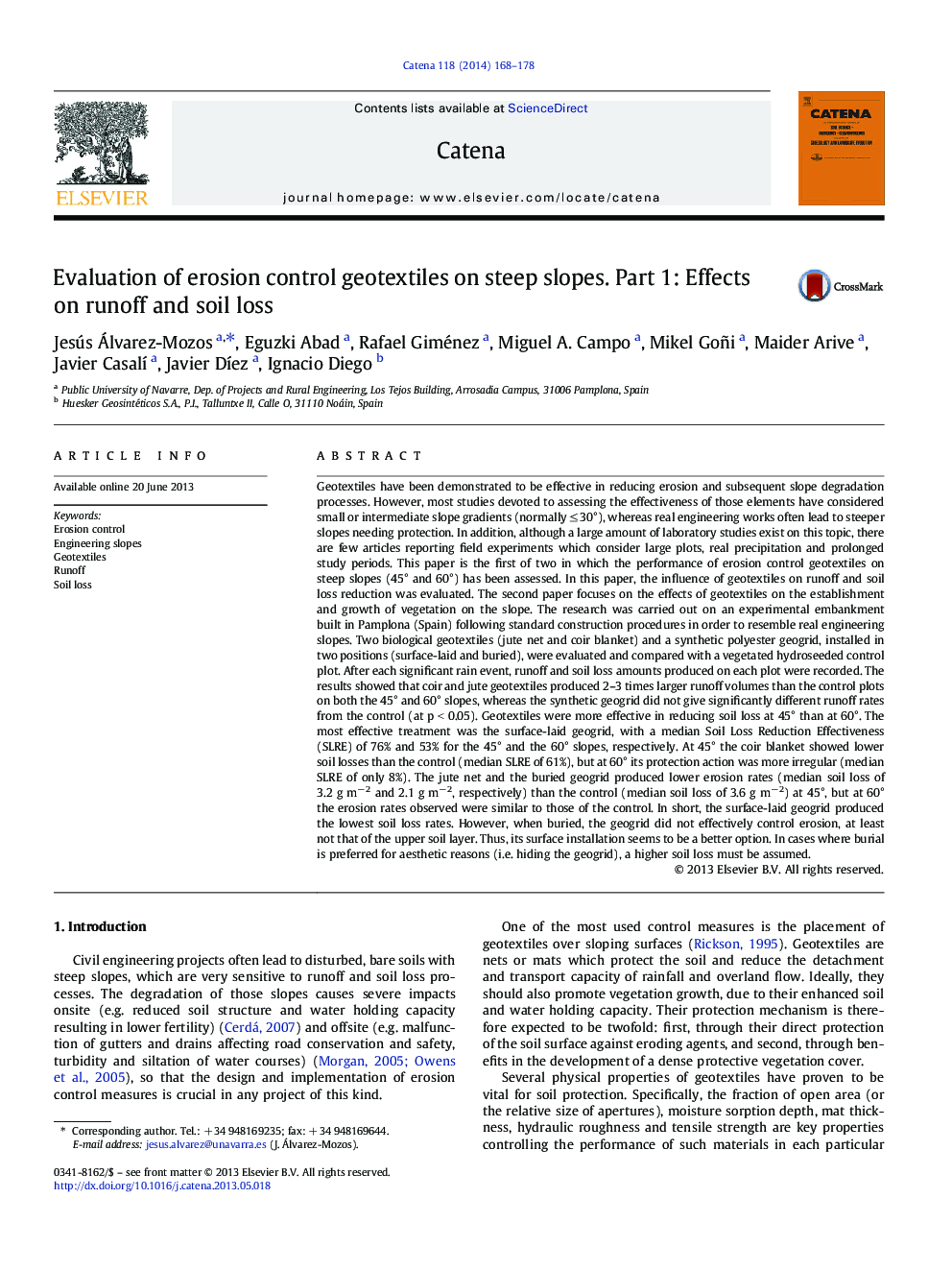| کد مقاله | کد نشریه | سال انتشار | مقاله انگلیسی | نسخه تمام متن |
|---|---|---|---|---|
| 6408131 | 1629234 | 2014 | 11 صفحه PDF | دانلود رایگان |
- Synthetic and biological geotextiles were evaluated on 45° and 60° slopes.
- Biological geotextiles produced higher runoff rates than the control.
- Geotextiles were more effective in reducing soil loss at 45° than at 60°.
- The synthetic geogrid produced the lowest soil loss followed by the coir blanket.
Geotextiles have been demonstrated to be effective in reducing erosion and subsequent slope degradation processes. However, most studies devoted to assessing the effectiveness of those elements have considered small or intermediate slope gradients (normally â¤Â 30°), whereas real engineering works often lead to steeper slopes needing protection. In addition, although a large amount of laboratory studies exist on this topic, there are few articles reporting field experiments which consider large plots, real precipitation and prolonged study periods. This paper is the first of two in which the performance of erosion control geotextiles on steep slopes (45° and 60°) has been assessed. In this paper, the influence of geotextiles on runoff and soil loss reduction was evaluated. The second paper focuses on the effects of geotextiles on the establishment and growth of vegetation on the slope. The research was carried out on an experimental embankment built in Pamplona (Spain) following standard construction procedures in order to resemble real engineering slopes. Two biological geotextiles (jute net and coir blanket) and a synthetic polyester geogrid, installed in two positions (surface-laid and buried), were evaluated and compared with a vegetated hydroseeded control plot. After each significant rain event, runoff and soil loss amounts produced on each plot were recorded. The results showed that coir and jute geotextiles produced 2-3 times larger runoff volumes than the control plots on both the 45° and 60° slopes, whereas the synthetic geogrid did not give significantly different runoff rates from the control (at p < 0.05). Geotextiles were more effective in reducing soil loss at 45° than at 60°. The most effective treatment was the surface-laid geogrid, with a median Soil Loss Reduction Effectiveness (SLRE) of 76% and 53% for the 45° and the 60° slopes, respectively. At 45° the coir blanket showed lower soil losses than the control (median SLRE of 61%), but at 60° its protection action was more irregular (median SLRE of only 8%). The jute net and the buried geogrid produced lower erosion rates (median soil loss of 3.2 g mâ 2 and 2.1 g mâ 2, respectively) than the control (median soil loss of 3.6 g mâ 2) at 45°, but at 60° the erosion rates observed were similar to those of the control. In short, the surface-laid geogrid produced the lowest soil loss rates. However, when buried, the geogrid did not effectively control erosion, at least not that of the upper soil layer. Thus, its surface installation seems to be a better option. In cases where burial is preferred for aesthetic reasons (i.e. hiding the geogrid), a higher soil loss must be assumed.
Journal: CATENA - Volume 118, July 2014, Pages 168-178
